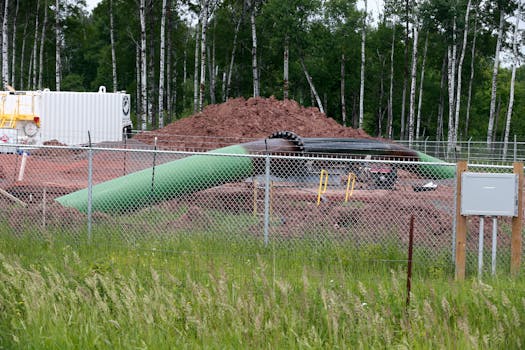By Morgan Black & Karen Bartko Global News
Posted August 30, 2021

As COVID-19 numbers keep climbing in Alberta, there's no sign of Premier Jason Kenney. It's been more than two weeks since Albertans last heard from Kenney, who has been on vacation. As Tom Vernon explains, there are growing calls for him to come back to work.
In the absence of regular provincial government news conferences, a group of Alberta doctors are providing their own COVID-19 update on Monday afternoon.

“There’s been a lot of people who have wanted some — any kind of movement forward — since our government hasn’t shown the willingness to do anything, despite this exponential rise in hospitalizations, ICUs and cases,” said Dr. Joe Vipond, a Calgary emergency room doctor who has been outspoken about the province’s response to the pandemic.
Vipond is one of the organizers of the “Protect our Province: COVID Briefing.”
It’s being spearheaded by the same medical professionals who led protests during the rollback of the vast majority of COVID-19 restrictions in July, opposing the Alberta government’s plan to lift mandatory isolation rules, scale back contact tracing and COVID-19 testing.

In mid-August, the government announced it would keep those measures for another six weeks.
That was the last time chief medical officer of health Dr. Deena Hinshaw was made available to answer questions at a news conference.
READ MORE: Alberta keeping COVID-19 measures for another six weeks
Premier Jason Kenney’s last public appearance was three weeks ago on Aug. 9, after which he went on vacation for two weeks.
Health Minister Tyler Shandro has not been made available to answer questions in several weeks either, although he recently tweeted about visiting a vaccination clinic and attending community events.
“It’s hard to figure out exactly what’s going on, but the way the policy is rolled out, it means that they are allowing this disease to run unmitigated through our unvaccinated population,” Vipond said, adding as a result of that, breakthrough infections amongst the vaccinated are happening as well.
“So if that’s not the intention of the policy, it’s certainly the result of it.”
READ MORE: Breakthrough cases: What’s it like catching COVID-19 after vaccination?
Vipond said he’s worried the health-care system will quickly become overwhelmed again.
“It takes about two weeks for any kind of policy change to roll through on the numbers, and maybe even more of that for the hospitalization, so even if we were to put in impressive mitigation measures now, it would still be a while before they roll through.
“This is a very serious situation. I can’t say why they’re allowing this to happen, but it seems to be an intentional effort to try to let it rip.”
“We know Albertans have questions, like going back to school, the current state of the health-care system.”
Bakshi said right now, there is a “void” in regards to information in the province.
“We haven’t heard a lot from our public health leaders in the last couple of weeks. There is a lot of anxiety and apprehension about going back to school. We are hopeful we can provide some information and background in regards to what’s going on.”
Vipond said with Alberta’s COVID-19 numbers climbing again, gathering in-person again like this summer’s protests is too dangerous now.
“So we thought, ‘We have all these people with expertise, these scientists, these physicians. Why don’t we try and fill some of the information gap that exists by allowing media and Albertans to ask questions of some of the experts?'”
The panel will include physicians and other health-care experts like aerosol specialist Conor Ruzycki and Malgorzata (Gosia) Gasperowicz, who does COVID modelling.

“We want to provide a forum where Albertans can get the information they need,” Bakshi said. “We are advocating for Albertans. We want to provide a forum that’s outside of a Twitter thread.
“I see what’s happening in the health-care system first-hand, and I can’t be silent.”
READ MORE: Kids and the Delta variant: As cases tick up, what does COVID-19 look like for children?
Bakshi said the forum will provide context on how Alberta can minimize the threat of COVID-19.
“Providing the context of [doctors], our experience, our exposure — certainly I’m not the chief medical officer of health, nor am I trying to be, but I can talk about what I am experiencing and what I’m seeing and hopefully, influence how we tackle this thing.”
“The lack of information is where my concern is. The policy and how things are executed are not my expertise.
“But arming Albertans with the information they need to make decisions in their life is the bare minimum, and I’m hoping we can provide an unbiased view of that.”
Vipond said this week that the panel will take place on Monday, Wednesday and Friday, and after that, they will see what works before setting a regular schedule.
“We’re hoping to fill that vacuum, but maybe we’ll also be successful in flushing the government out. Maybe they don’t want us to own the information sphere. Maybe they need to return to the discourse and make themselves available to the media for questioning,” he said.
While one of the goals is to inform citizens and give journalists an opportunity to ask questions, Vipond said the ultimate object is to get the spread of COVID-19 and the Delta variant under control, “because we’re in for a heap of trouble if we just continue to let it rip.”
‘Exponential growth’
Vipond was joined by a handful of other doctors and health experts on Monday afternoon.
The format was familiar — complete with the pre-briefing music that often came before provincial updates. Vipond provided an update on the number of cases, hospitalizations, ICU rates and deaths.
“We have had an 81.4 per cent increase in our ICU rates in the last week,” Vipond said. “We have had this exponential growth in the fourth wave.”
The panel took questions from journalists and other viewers, including questions the province wasn’t available for Monday, like the announcement that third doses will soon be available for immunocompromised people or those living in congregate care.
“As health-care workers in Alberta, we are continually fighting this battle,” said Bakshi. “As health-care workers, we will continue to show up for what we believe in, which is caring for patients.”
It began to seem that nobody was minding the store — and worse, that the government didn’t really care if COVID-19 got out of hand again

There’s nothing more embarrassing than making the dumbest comment of your life at the exact moment when everybody else in the room falls silent.
So it was with UCP MLA Nathan Neudorf, from Lethbridge, who found himself the sole voice on COVID-19 in a week when the entire government was in hibernation.
His comments — which seemed to approve of COVID-19 raging through the unvaccinated population — echoed across Alberta and the country.
To some, the remarks seemed a logical escalation of Alberta government policy — and maybe what the UCP types actually say behind closed doors.
Neudorf sharply changed the emphasis on Monday.
In the full media glare beyond his riding, there was no talk of letting the virus burn through the unvaccinated so it could hit the brick wall of the vaccinated population and then fade away.
Without acknowledging retreat, Neudorf said the government only wants as many people as possible vaccinated and hopes the current surge in cases comes down.
“I think we have shown through the entire pandemic that when case numbers rise with the increased number of hospitalizations and ICU numbers, we take additional action,” Neudorf said.
“And I believe we are watching that especially closely as we look to going back to school.”
He got a very barbed question about whether he wanted the virus to thrive among kids under 12, none of whom are vaccinated.
“Absolutely not,” he said.
“I’ve never hoped that cases would go up.”
It was that word — hope — that got him into trouble in the first place.
Referring to British experience (which he seems to have misread, but that’s another story) he told a TV outlet: “I’m very hopeful that we will see the same kind of trend, maybe a bit of an accelerated case rate, but then a very quick decline as well, allowing us to safely keep businesses open so we don’t have to add further restrictions.”
That was very badly worded but it’s hardly proof that Neudorf wants people to suffer for the larger cause; and even less likely, considering that he and his wife have five kids.
Neudorf seems to have authority beyond the usual backbencher because he’s the chair of the UCP caucus. He was installed after Todd Loewen resigned from that job, and was later kicked out of caucus, for calling on Premier Jason Kenney to quit.
Neudorf’s provocative comments were also amplified by the profound government silence.
Kenney was on holiday at some undisclosed place on earth. His office denied that he was in France, although the government was abuzz with talk that he had been to Europe.
Top media aides simply refused to respond to questions about his whereabouts. Health Minister Tyler Shandro was away for a time as well.
Meanwhile, COVID-19 cases were rising sharply to above 1,000 a day, by far the highest count in Canada, both per capita and in absolute terms. Those numbers are not going down.

It began to seem that nobody was minding the store — and worse, that the government didn’t really care if COVID-19 got out of hand again. Neudorf’s remarks seemed to be confirmation.
Now the lonely MLA says the government is on the same track as always; encourage vaccination and react with measures when cases rise (but not before).
On Monday afternoon the apparatus suddenly sprang to life, approving third “booster” shots for the immunocompromised and seniors living in congregate care. Nearly 120,000 people will be eligible.
Evidently the government is back at work. Soon it may even talk again.
But it’s obvious that the UCP is sick of governing with so much emphasis on the pandemic, and longs to hand decision-making to lesser agencies for matters like vaccine passports.
Which does not mean, no matter what one might think of this outfit, that they actually want people to get sick.
Don Braid’s column appears regularly in the Herald





 The bones of between 5,000 and 20,000 people lie in the ground, making it one of the largest mass graves unearthed in Ukraine Oleksandr GIMANOV AFP
The bones of between 5,000 and 20,000 people lie in the ground, making it one of the largest mass graves unearthed in Ukraine Oleksandr GIMANOV AFP







